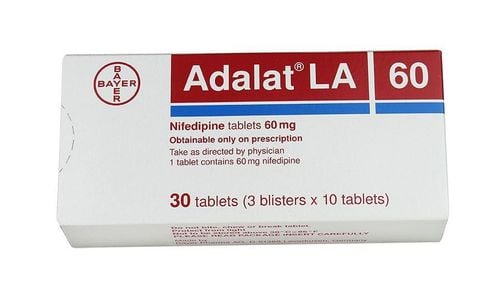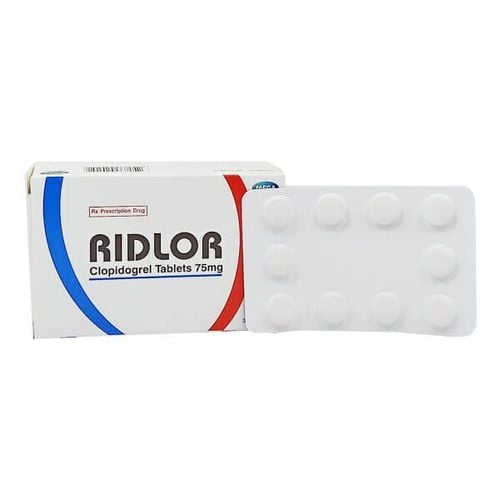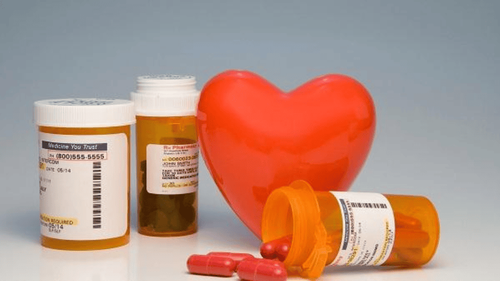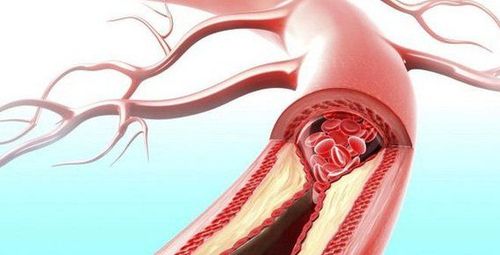This is an automatically translated article.
The article was professionally consulted with Master, Doctor Pham Van Hung - Department of Medical Examination & Internal Medicine - Vinmec Da Nang International General Hospital.Peripheral artery occlusion is a silent disease or manifests itself but is not obvious, causing treatment delay and patients suffering severe sequelae such as amputation due to gangrene.
1. What is peripheral arterial occlusive disease?
Arteries are responsible for carrying blood from the heart to the capillaries of the body, providing oxygen and maintaining life activities. However, for some reason, atherosclerotic plaques and thrombus block arteries and cause arterial occlusion. Arterial occlusion can be seen in extremities, coronary occlusion or cerebral vascular occlusion... in which peripheral artery occlusion is the most common case.Peripheral artery disease is a condition in which the arteries supplying blood to the extremities are blocked due to atherosclerosis or blood clots in the blood vessels, thereby causing numbness, pain, and even necrosis if Untreated.
Peripheral artery occlusion is common in the elderly or at-risk groups as follows:
Smoking: Smoking is thought to be the main cause of peripheral artery disease, studies have shown that smokers Smokers often get sick 10 years earlier than non-smokers. Diabetes: The endothelium of the blood vessels in people with diabetes is easily damaged and there is a high risk of fat deposition in the blood vessels. High blood pressure: People with high blood pressure often have higher blood pressure than normal people, so blood vessels are also more susceptible to damage. Dyslipidemia and obesity are both causes of atherosclerosis.
2. The dangers of peripheral artery occlusion
Why is peripheral artery disease dangerous? The following are reasons why this disease deserves more attention from the public and the medical community:More than 75% of people with peripheral artery occlusion have no symptoms, which means that the patient The disease is not detected until it is advanced and difficult to treat. Peripheral artery occlusion is easy to misdiagnose with many different conditions and miss the best time to treat the disease. People with peripheral artery disease have a higher risk of heart attack and stroke than the general population. Peripheral artery occlusion, if not treated promptly, can lead to gangrene and amputation. The incidence of peripheral artery occlusion increases with age, and up to 20% of people develop the disease after the age of 70.

3. How is peripheral artery occlusion treated?
The clinical symptoms of peripheral artery occlusion are often difficult to recognize because these signs are often similar to many other diseases, however, the clinician will rely on the symptoms of claudication and palpation to make a diagnosis. .Besides, the doctor will assign the patient to perform some investigations such as:
Magnetic resonance imaging. Doppler ultrasound of blood vessels. MSCT scan. Contrast angiography. After the diagnosis results are available, the patient will be treated according to the regimen appropriate to the condition.
In principle, the treatment of arterial occlusion, pain relief and prevention of disease progression is the first problem to be done, then depending on the severity, the doctor will give treatment methods such as: Following:
Exercise, change eating habits: This is the most effective treatment method, the doctor will help the patient make a suitable exercise plan. Although this method gives slow results, it is a basic treatment step and cannot be skipped. Besides exercise, diet is also very important, especially for patients with arterial occlusion due to blood fat. Patients must also quit smoking during the treatment of this disease, because smoking is also one of the factors that cause blood vessel blockage. Drug treatment: Some drugs are prescribed such as antihypertensive drugs, blood lipid lowering drugs, cilostazol, pentoinfylin, antiplatelet drugs (aspirin, clopidogrel)...) Intervention through the catheter: Use angioplasty or stenting of the arteries. Surgery: Indicated in case of complete occlusion of a long segment of blood vessel, it is performed by cutting a segment of vein to make a bridge from the blockage to the blood vessel supplying the lower part of the blockage. After successful surgery, patients still have to adhere to medication and exercise regimens, scientific lifestyle as prescribed by the doctor. Peripheral artery occlusion is not only a life-threatening disease but also a warning bell for other cardiovascular diseases that patients may have in the future. Therefore, patients need to actively cooperate with doctors to treat as well as adjust a healthy lifestyle, adhere to a regular health check-up schedule to early detect abnormalities or diseases and treat them promptly.
Currently, Cardiovascular Center - Vinmec International General Hospital is one of the leading centers in the country for examination, diagnosis, screening and treatment of cardiovascular diseases. Vinmec not only has the convergence of a team of experienced and reputable leading experts in the field of surgical treatment, internal medicine, interventional cardiac catheterization, but also has a system of modern equipment, on par with The most prestigious hospitals in the world such as: MRI 3 Tesla (Siemens), CT 640 (Toshiba), high-end endoscopy equipment EVIS EXERA III (Olympus Japan), high anesthesia system Avace level, Hybrid operating room according to international standards... Especially, with the space designed according to 5-star hotel standards, Vinmec ensures to bring patients the most comfort, friendliness and peace of mind. .
Please dial HOTLINE for more information or register for an appointment HERE. Download MyVinmec app to make appointments faster and to manage your bookings easily.














